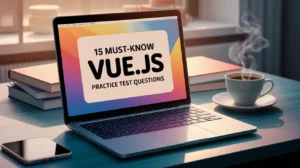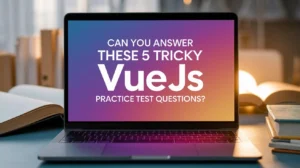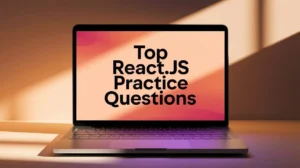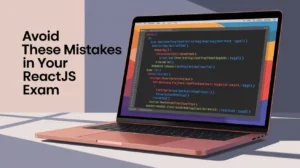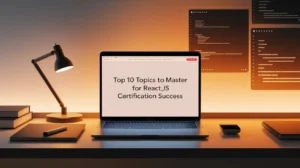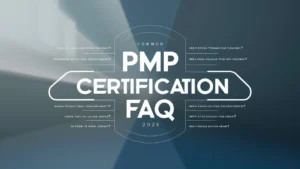Introduction
You’re staring down your React.js certification exam, and the clock’s ticking. This test is your ticket to landing that sweet front-end developer gig, but it’s no walk in the park—think hooks, Redux, and coding tasks that’ll make your brain sweat. Feeling a little jittery? I get it. I was a nervous wreck before my exam, but cracking the right React.js practice questions for certification turned me from panicked to prepared.
In this guide, I’m dishing out the top React.js certification prep questions you gotta solve before test day. I’ll toss in stories from my own prep, some handy tips, and a bit of fun to keep you hooked. From multiple-choice gotchas to coding challenges, these Best React.js certification practice questions are your roadmap to acing it. Let’s dive in and get you ready to slay that exam.
Why Practice Questions Are Your Exam Superpower
React.js is the magic behind over 40% of today’s web apps—think Netflix, Airbnb, you name it. A certification proves you can handle its quirks, from JSX to state management. But the exam’s tough, mixing theory (hooks, context) with hands-on coding. Solving React.js practice questions for certification is like a gym session for your brain—it builds the skills and confidence you need to How to prepare for React.js certification exam.
I’ve seen folks bomb practice tests only to crush the real thing after nailing the right questions. This guide picks the React.js certification study questions that mirror the exam’s vibe—multiple-choice, coding, and scenario-based—so you’re ready for anything. Let’s check out the React.js exam coding challenges and more that’ll get you there.
Question Type 1: Multiple-Choice Questions (MCQs) on the Basics
MCQs are the exam’s bread and butter, testing your grip on React fundamentals like JSX, props, and state. They’re tricky, with answers that look almost right.
Sample Question:
What’s the right way to update state in a functional component?
A) this.setState({ count: count + 1 })
B) setCount(count + 1)
C) count = count + 1
D) useState(count + 1)
Answer: B) setCount(count + 1)
Why: Functional components use useState, which gives you a state variable and a setter (like setCount). Option B uses the setter correctly. Option A is for class components, C messes with state directly (big no-no), and D misuses useState.
Why It Matters: MCQs like this hit core concepts hard, and you’ll see 10-15 of them on the exam. They test if you really get state.
How to Nail It:
Work through 20-30 MCQs on JSX, props, and state with Gururo’s React.js certification practice tests.
Make flashcards for key ideas, like “State updates are async.”
Go over wrong answers to spot why the distractors fooled you.
My Flub: I totally botched a state MCQ in practice because I rushed. After grinding Gururo’s quizzes, I was picking the right answer like a pro by exam day.
My Trick: Remember “MUR” for lifecycle stuff (Mount, Update, Unmount). It’s a lifesaver for MCQs.
Question Type 2: Coding Challenge – Hook It Up with a Counter
Coding tasks are exam classics, checking if you can write React code that works. A go-to is building a counter with hooks.
Sample Question:
Code a Counter component that shows a number and has buttons to bump it up or down. Use useState.
Sample Code:
import React, { useState } from 'react';
function Counter() {
const [count, setCount] = useState(0);
return (
<div>
<p>Count: {count}</p>
<button> setCount(count + 1)}>Up</button>
<button> setCount(count - 1)}>Down</button>
</div>
);
}
export default Counter;
Why It Matters: This nails useState, event handling, and JSX—stuff you have to know. Exams might tweak it, like adding a reset button or capping the count.
How to Nail It:
Build 5-10 counter versions (like one with a max limit) on CodeSandbox.
Try similar tasks on Gururo’s React.js certification practice tests.
Time yourself to finish in 10 minutes, like the real exam.
Friend’s Win: My buddy Raj was shaky on hooks. He coded counters every day and whipped up a perfect one in 7 minutes during his exam, hitting 91%.
Cool Tidbit: Hooks dropped in 2018 and now run the show in React, with useState in almost every functional component.
Question Type 3: Debugging a Busted Component
Debugging questions throw you broken code and say, “Fix it.” They test how well you spot and squash React bugs.
Sample Question:
This component’s stuck in an infinite loop. Find the problem and fix it.
import React, { useState, useEffect } from 'react';
function DataFetcher() {
const [data, setData] = useState([]);
useEffect(() => {
fetch('https://api.example.com/data')
.then(res => res.json())
.then(result => setData(result));
setData([...data, 'new item']);
});
return <div>{data.map(item => <p>{item}</p>)}</div>;
}
Fix: The useEffect runs every render because it’s missing a dependency array, and setData triggers another render. Add an empty array to run it once.
Fixed Code:
useEffect(() => {
fetch('https://api.example.com/data')
.then(res => res.json())
.then(result => setData(result));
}, []); // Empty array = run once
Why It Matters: Debugging checks your useEffect know-how and React’s render cycle, both big exam topics.
How to Nail It:
Tackle 10-15 debugging problems on HackerRank or CodePen.
Use Gururo’s coding quizzes to catch errors like missing keys or bad hooks.
Jot down common bugs, like “No dependency array = loop city.”
My Oof: A useEffect debugging question killed me in a practice test. I practiced like crazy and spotted a similar bug in seconds on the real exam.
My Trick: Always check useEffect for missing dependencies first. It’s a common trap.
Question Type 4: Scenario-Based Redux Question
Scenario questions test how you apply big concepts like Redux in real-life setups. They’re exam wildcards that trip up a lot of folks.
Sample Question:
You’re coding a shopping cart app with Redux. The state has a cart array. Write an action creator and reducer to add an item.
Sample Code:
// Action Creator
export const addToCart = (item) => ({
type: 'ADD_TO_CART',
payload: item
});
// Reducer
const initialState = { cart: [] };
export const cartReducer = (state = initialState, action) => {
switch (action.type) {
case 'ADD_TO_CART':
return { ...state, cart: [...state.cart, action.payload] };
default:
return state;
}
};
Why It Matters: Redux questions hit state management, a must for complex React apps and a frequent exam topic. You might see twists on thunks or middleware.
How to Nail It:
Build a small Redux app, like a cart, to get actions, reducers, and stores down.
Solve 5-10 Redux scenarios on Gururo’s React.js certification practice tests.
Check the Redux docs for async actions and middleware.
My Flub: I tanked a Redux question in practice because I forgot how reducers work. A week of focused coding later, I aced a similar one on the exam.
Cheeky Quote: “Redux: keeping state in line, one reducer at a time.” – Some dev, probably.
Question Type 5: Coding a Form with Controlled Components
Forms are exam favorites, testing how you handle user input with controlled components.
Sample Question:
Code a Form component that grabs a user’s name and email, stores it in state, and shows the submitted data below.
Sample Code:
import React, { useState } from 'react';
function Form() {
const [formData, setFormData] = useState({ name: '', email: '' });
const [submitted, setSubmitted] = useState(null);
const handleChange = (e) => {
setFormData({ ...formData, [e.target.name]: e.target.value });
};
const handleSubmit = (e) => {
e.preventDefault();
setSubmitted(formData);
};
return (
<div>
<button type="submit">Submit</button>
{submitted && (
<p>
Name: {submitted.name}, Email: {submitted.email}
</p>
)}
</div>
);
}
export default Form;
Why It Matters: Forms test controlled components, events, and state—core React skills. Exams might add validation or conditional displays.
How to Nail It:
Code 5-10 forms with extras like validation or reset buttons.
Test them on CodeSandbox or Repl.it.
Practice similar tasks on Gururo’s coding quizzes.
Friend’s Win: Priya was shaky on forms but practiced daily on CodePen. She built a perfect form in 11 minutes on her exam, hitting 93%.
Neat Fact: Controlled components let React “own” form state, making tricks like validation super smooth.
Question Type 6: MCQ on Making It Fast
Performance questions check if you can optimize React apps, a hot topic as apps get bigger.
Sample Question:
What stops a component from re-rendering unnecessarily?
A) Swap useState for useReducer
B) Wrap it in React.memo
C) Add a dependency array to useEffect
D) Use class components instead
Answer: B) React.memo
Why: React.memo caches a component, skipping re-renders if props stay the same. Option C is about useEffect, not rendering, and A and D don’t help.
Why It Matters: Optimization questions hit advanced skills like memoization, which pro exams love.
How to Nail It:
Solve 10-15 performance MCQs on Gururo’s React.js certification practice tests.
Play with React.memo, useCallback, and useMemo in a test app.
Read React’s performance docs for the full scoop.
My Story: I missed a memoization question in practice but got obsessed with React.memo. It paid off when I nailed a similar one on the exam.
My Trick: Think of the optimization trio: React.memo for components, useCallback for functions, useMemo for values.
Your Game Plan for Practicing
To make these Best React.js certification practice questions work, here’s a plan:
Weeks 1-2: Hit MCQs and simple coding (counters, forms) with Gururo and CodeSandbox.
Weeks 3-4: Tackle debugging and Redux, learning from every mistake.
Weeks 5-6: Mix all types under timed conditions to feel the exam pressure.
My Hack: Spend 10-15 hours a week, splitting time between theory (MCQs, docs) and coding (challenges, debugging).
Quick Chat:
“These questions are a lot!”
“Start small—do Gururo MCQs, then code a counter. You’ll get the hang of it.”
Extra Goodies
Books:
- Learning React by Alex Banks and Eve Porcello: Covers it all.
- React Design Patterns and Best Practices by Michele Bertoli: Dives deep.
Tools:
- CodeSandbox: Quick React playground.
- ESLint: Keeps your code tight.
Websites:
- Gururo: Awesome React.js certification practice tests.
- React.dev: The official React bible.
Communities:
- Reactiflux (Discord): Hang with React coders.
- r/reactjs (Reddit): Ask questions, share wins.
Wrapping Up: Questions = Confidence
These top React.js practice questions for certification—MCQs, coding tasks, debugging, and scenarios—are your ticket to crushing the exam. From hooks to performance tweaks, these React.js certification prep questions prep you for the real deal. Add in Gururo’s React.js certification practice tests, and you’re set to walk in cool as a cucumber and walk out with a win.
My exam prep was a wild ride, but nailing practice questions made me feel unstoppable. Like a coder pal once said, “Fix one bug, win one battle.” Solve these React.js certification study questions, and the exam’s yours.
Your Next Step: Get cracking! Try a Gururo React.js certification practice test, code a form, or hit up a React community. Your exam’s waiting—go own it!
FAQs
The exam features multiple-choice questions, coding tasks like building counters or forms, debugging challenges, and scenario-based questions on topics like Redux.
Hooks like useState and useEffect are core to modern React, heavily tested in React.js certification prep questions for state and side-effect management.
Code 5-10 tasks (e.g., counters, forms) on CodeSandbox, use Gururo’s React.js certification practice tests, and time yourself to mimic exam conditions.
Gururo’s React.js certification practice tests and platforms like HackerRank offer best React.js certification practice questions that mirror the exam.
Practice spotting errors like missing useEffect dependency arrays on CodePen and review React.js certification study questions on Gururo to sharpen skills.
Take deep breaths if stuck, visualize success, and practice under timed conditions to build confidence.







